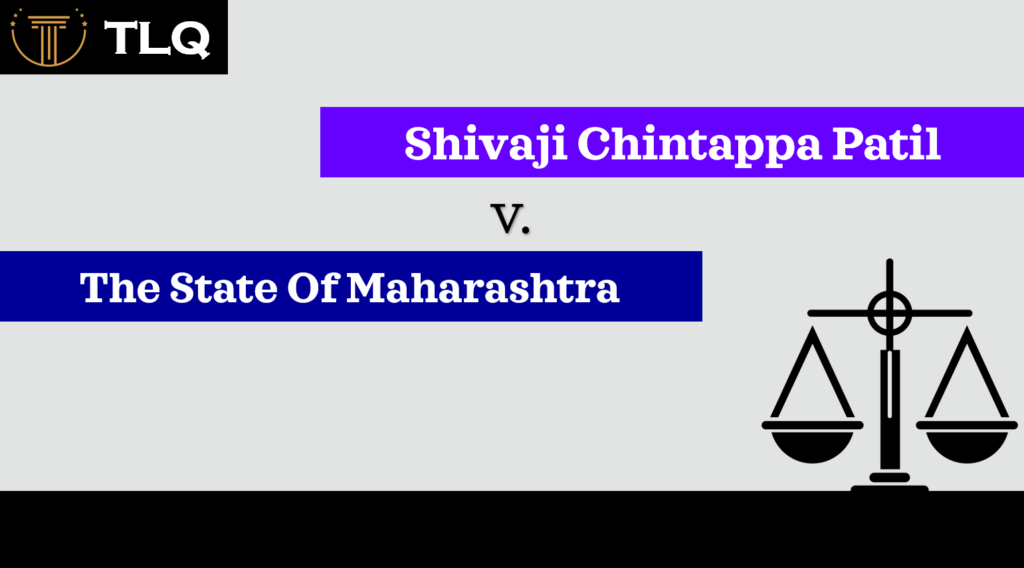Published On: October 15th 2025
Authored By: Manyata Singh
Maharaja Surajmal Institute, GGSIPU
Abstract
Women’s rights in matrimonial and property disputes have undergone significant evolution in India. Traditionally constrained by patriarchal customs and discriminatory laws, women were often denied equal access to property and protection in marriage. However, with the enactment of progressive legislations such as the Hindu Succession (Amendment) Act, 2005,[1] the Protection of Women from Domestic Violence Act, 2005,[2] and judicial pronouncements by the Supreme Court,[3] women’s rights have been strengthened in areas of inheritance, divorce, alimony, residence, and ownership of property. This article examines the legal framework and constitutional safeguards for women in matrimonial and property disputes, discusses leading case laws, and evaluates challenges in enforcement. The paper concludes that while India has taken commendable steps toward gender equality, effective implementation and societal change remain crucial for ensuring real empowerment.[4]
Introduction
The legal status of women in India has historically been shaped by patriarchal norms, religious customs, and personal laws that often placed women in subordinate positions within both the family and society.[5] For centuries, women were denied independent rights in property and were largely dependent upon their husbands or male relatives for financial security.[6] Their role in matrimonial matters was primarily defined in terms of duties rather than rights, leaving them vulnerable in cases of desertion, domestic violence, and divorce.[7]
Post-independence, the framers of the Indian Constitution recognized the urgent need to correct gender imbalances through guarantees of equality and dignity. Articles 14, 15, and 21 collectively form the foundation of women’s rights jurisprudence, ensuring equality before the law, protection against discrimination, and the right to live with dignity.[8] Building upon these constitutional ideals, the legislature enacted a series of progressive statutes, including the Hindu Marriage Act, 1955[9], the Hindu Succession Act, 1956 (later amended in 2005),[10] the Special Marriage Act, 1954,[11] and the Protection of Women from Domestic Violence Act, 2005.[12] These enactments, together with judicial interpretation, have transformed the legal landscape of women’s rights in matrimonial and property disputes.
Judicial activism has also played a crucial role in strengthening these rights. Landmark cases such as Vineeta Sharma v. Rakesh Sharma, which affirmed the coparcenary rights of daughters under Hindu law,[13] and Danial Latifi v. Union of India, which safeguarded Muslim women’s rights to a fair provision after divorce,[14] underscore the judiciary’s role in upholding gender justice. At the same time, courts have recognized a woman’s right to maintenance, residence, and protection from abuse, reinforcing that matrimonial and property rights are essential components of her dignity and equality.
Despite this progress, significant challenges remain. Social stigma, lack of awareness, procedural delays, and patriarchal resistance continue to hinder women’s access to justice.[15] Thus, while India has made commendable strides in codifying and enforcing women’s rights, the task of ensuring their full and practical realisation is still ongoing. This article aims to examine these rights in detail, focusing on their legal framework, judicial development, and the contemporary challenges they present.
Constitutional Safeguards for Women
The Constitution of India lays the foundation for gender equality and the protection of women’s rights. Article 14 guarantees equality before the law, while Article 15(1) prohibits discrimination on the grounds of sex. Importantly, Article 15(3) empowers the State to enact special provisions for women, which has enabled progressive legislation such as the Dowry Prohibition Act, 1961 and the Protection of Women from Domestic Violence Act, 2005.[16]
Article 21 has been interpreted broadly to include the right to dignity and protection from violence.[17] In Vishaka v. State of Rajasthan, the Supreme Court held that gender equality and a safe environment are integral to the right to life.[18] Similarly, the Directive Principles, particularly Articles 39 and 42, guide the State to ensure equal pay, humane conditions of work, and maternity relief.
Judicial interpretation has harmonised personal laws with constitutional values. In C. Masilamani Mudaliar v. Idol of Sri Swaminathaswami Thirukoil, the Court emphasised that personal laws must conform to constitutional guarantees of equality and dignity.[19] These safeguards provide the normative basis for women’s rights in matrimonial and property disputes.
Rights of Women in Matrimonial Disputes
Matrimonial disputes often expose women to financial vulnerability and social stigma. Statutory protections, supported by judicial pronouncements, attempt to mitigate these disadvantages.
- Right to Marriage and Divorce
The Hindu Marriage Act, 1955 and the Special Marriage Act, 1954 recognise grounds for divorce such as cruelty, desertion, and adultery.[20] Amendments to the Indian Divorce Act, 1869, have also ensured parity between Christian women and men in seeking divorce.[21] In Shikha Bhatia v. Gaurav Bhatia, the Delhi High Court recognised mental cruelty as a valid ground, reinforcing that dignity cannot be compromised in marriage.[22]
- Right to Maintenance and Alimony
Section 125 CrPC provides maintenance to wives unable to support themselves, irrespective of religion.[23] Under the Hindu Marriage Act, §§24–25 allow for interim and permanent alimony.[24] For Muslim women, the Muslim Women (Protection of Rights on Divorce) Act, 1986 applies. In Danial Latifi v. Union of India, the Supreme Court clarified that husbands must make a “fair and reasonable provision” extending beyond the iddat period.[25] More recently, Shamima Farooqui v. Shahid Khan reaffirmed that maintenance is a legal right, not charity.[26]
- Right against Domestic Violence
The Protection of Women from Domestic Violence Act, 2005 recognises multiple forms of abuse: physical, sexual, emotional, and economic[27]. It grants women protection orders, monetary relief, and the right to reside in the shared household. However, in S.R. Batra v. Taruna Batra, the Supreme Court limited this right, holding that a wife cannot claim residence in property owned solely by her in-laws, a stance later criticised as contrary to the Act’s spirit.[28]
- Right to Custody of Children
Custody is governed by the Guardians and Wards Act, 1890, with the child’s welfare being paramount.[29] In Roxann Sharma v. Arun Sharma, the Court stressed that custody decisions must prioritise the child’s best interest rather than parental financial superiority.[30]
Together, these matrimonial protections underscore the State’s role in safeguarding women’s dignity, financial security, and parental rights within the marital framework.
Rights of Women in Property Disputes
Property ownership has historically been one of the most contested areas for women in India. Patriarchal norms, coupled with restrictive personal laws, often limited women’s rights to inheritance and ownership. Over time, statutory reforms and judicial pronouncements have sought to correct these inequities.
- Hindu Law: Coparcenary and Inheritance
The Hindu Succession Act, 1956, initially excluded daughters from being coparceners in joint family property, privileging male heirs. This discrimination was rectified through the Hindu Succession (Amendment) Act, 2005, which granted daughters the same coparcenary rights as sons, irrespective of marital status.[31]
In Vineeta Sharma v. Rakesh Sharma, the Supreme Court clarified that daughters acquire coparcenary rights by birth, even if the father died before the 2005 amendment.[32] This judgment cemented gender parity in Hindu inheritance law, ensuring equal access to ancestral property.
Moreover, women also have absolute ownership over their property, as per §14 of the Hindu Succession Act, which converted limited estates into full ownership.[33]
- Muslim Law: Inheritance and Property Ownership
Under Islamic law, women are entitled to inheritance, though their shares are generally half of those of men in the same degree of relation.[34] Despite this disparity, a Muslim woman’s share is recognised as her absolute property, and she retains complete control over it. Additionally, the concept of mehr (dower) provides her financial security within marriage.
Judicial precedents have upheld these rights. In Mary Roy v. State of Kerala, although concerning Syrian Christian succession, the Supreme Court highlighted that personal laws must be interpreted progressively to ensure gender justice—a principle equally relevant to Muslim women’s inheritance rights.[35]
- Christian and Parsi Women: Succession under Statute
For Christians and Parsis, inheritance is governed by the Indian Succession Act, 1925.[36] The Act provides equal rights to men and women in cases of intestate succession, ensuring that daughters, widows, and mothers inherit alongside sons. This statutory framework avoids the sharp gender disparity present in some other personal laws, though awareness and enforcement remain challenges.
- Stridhan and Dowry Prohibition
Beyond inheritance, the concept of stridhan plays a vital role in protecting women’s financial independence. Stridhan refers to property gifted to a woman before, during, or after marriage and remains her absolute property. In Pratibha Rani v. Suraj Kumar, the Supreme Court held that a husband or in-laws have no ownership over a woman’s stridhan, and its misappropriation amounts to criminal breach of trust.[37]
Additionally, the Dowry Prohibition Act, 1961, criminalises dowry demands, aiming to safeguard women from coercion and exploitation in property-related matters.[38] While implementation has faced hurdles, the law affirms women’s entitlement to voluntary gifts (stridhan) while condemning forced transfers as dowry.
Judicial Expansion of Women’s Property Rights
Indian courts have increasingly harmonised personal laws with constitutional principles of equality. In C. Masilamani Mudaliar v. Idol of Sri Swaminathaswami Thirukoil, the Court emphasised that personal laws cannot contravene fundamental rights and must be interpreted in line with gender justice.[39] This reasoning has guided the judiciary in striking down discriminatory practices and affirming women’s equal property rights.
Challenges in Enforcement
Despite progressive reforms, women often face barriers in exercising their matrimonial and property rights. First, a lack of awareness and legal literacy prevents many from approaching courts.[40] Second, litigation is time-consuming and expensive, deterring women from pursuing claims. Third, deep-rooted patriarchy and social stigma discourage women from asserting their rights, especially in rural areas[41]. Finally, conflicting personal laws sometimes perpetuate gender disparities, complicating enforcement despite constitutional guarantees.[42]
The Way Forward
Strengthening women’s rights requires both legal and social reform. Awareness programs and legal aid are essential to empower women to claim their entitlements.[43] Judicial activism must continue to harmonise personal laws with constitutional equality. Legislative consideration of a Uniform Civil Code (UCC) may also provide uniformity, though it remains politically contentious.[44] Beyond legal measures, societal change, challenging patriarchal attitudes, and normalising women’s autonomy are indispensable for true equality.
Conclusion
The evolution of women’s rights in India reflects a gradual but determined move from exclusion to equality. Constitutional safeguards under Articles 14, 15, and 21 provide the foundation. At the same time, statutes such as the Hindu Succession (Amendment) Act, 2005 and the Protection of Women from Domestic Violence Act, 2005, have significantly advanced women’s autonomy in both matrimonial and property matters. Judicial pronouncements, such as those of Danial Latifi, Vineeta Sharma, and Pratibha Rani, among others, have reinforced that gender justice is central to India’s legal framework.
Yet, the gap between law and practice remains wide. Patriarchal norms, procedural hurdles, and lack of awareness continue to undermine progress. Ensuring that rights are not merely theoretical but practically enforceable requires a collective effort by lawmakers, courts, civil society, and communities alike. True empowerment will be realised only when women can exercise their matrimonial and property rights freely, without fear, stigma, or dependence.
References
[1] Hindu Succession (Amendment) Act, No. 39 of 2005, INDIA CODE (2005).
[2] Protection of Women from Domestic Violence Act, No. 43 of 2005, INDIA CODE (2005).
[3] Vineeta Sharma v. Rakesh Sharma, (2020) 9 S.C.C. 1 (recognizing daughters as coparceners by birth); Danial Latifi v. Union of India, (2001) 7 S.C.C. 740 (upholding Muslim women’s right to fair provision).
[4] INDIA CONST. arts. 14, 15, 21.
[5] Flavia Agnes, Law, Justice and Gender: Family Law and Constitutional Provisions in India 15–17 (1999).
[6] Lotika Sarkar, The Hindu Code Bill: A Historical Perspective, 21 Ind. J. Gender Stud. 1, 3–5 (2001).
[7] Archana Parashar, Women and Family Law Reform in India: Uniform Civil Code and Gender Equality 42–44 (1992).
[8] INDIA CONST. arts. 14, 15, 21.
[9] Hindu Marriage Act, No. 25 of 1955, INDIA CODE (1955).
[10] Hindu Succession Act, No. 30 of 1956, INDIA CODE (1956), as amended by Hindu Succession (Amendment) Act, No. 39 of 2005.
[11] Special Marriage Act, No. 43 of 1954, INDIA CODE (1954).
[12] Protection of Women from Domestic Violence Act, No. 43 of 2005, INDIA CODE (2005).
[13] Vineeta Sharma v. Rakesh Sharma, (2020) 9 S.C.C. 1.
[14] Danial Latifi v. Union of India, (2001) 7 S.C.C. 740.
[15] Shalini Nair, Gender Justice and the Indian Legal System: Challenges and Prospects, 12 Nat’l L. Sch. Rev. 215, 229–32 (2019).
[16] INDIA CONST. arts. 14, 15(1)–(3); Dowry Prohibition Act, No. 28 of 1961, INDIA CODE (1961); Protection of Women from Domestic Violence Act, No. 43 of 2005, INDIA CODE (2005).
[17] INDIA CONST. art. 21.
[18] Vishaka v. State of Rajasthan, (1997) 6 S.C.C. 241.
[19] C. Masilamani Mudaliar v. Idol of Sri Swaminathaswami Thirukoil, (1996) 8 S.C.C. 525.
[20] Hindu Marriage Act, No. 25 of 1955, INDIA CODE (1955), §§ 13–14; Special Marriage Act, No. 43 of 1954, INDIA CODE (1954).
[21] Indian Divorce Act, No. 4 of 1869, INDIA CODE (1869), as amended by Act No. 51 of 2001.
[22] Shikha Bhatia v. Gaurav Bhatia, 2010 SCC Online Del 4123.
[23] Code of Criminal Procedure, No. 2 of 1974, INDIA CODE (1974), § 125.
[24] Hindu Marriage Act, No. 25 of 1955, §§ 24–25.
[25] Danial Latifi v. Union of India, (2001) 7 S.C.C. 740.
[26] Shamima Farooqui v. Shahid Khan, (2015) 5 S.C.C. 705.
[27] Protection of Women from Domestic Violence Act, No. 43 of 2005.
[28] S.R. Batra v. Taruna Batra, (2007) 3 S.C.C. 169.
[29] Guardians and Wards Act, No. 8 of 1890, INDIA CODE (1890).
[30] Roxann Sharma v. Arun Sharma, (2015) 8 S.C.C. 318.
[31] Hindu Succession (Amendment) Act, No. 39 of 2005, INDIA CODE (2005).
[32] Vineeta Sharma v. Rakesh Sharma, (2020) 9 S.C.C. 1.
[33] Hindu Succession Act, No. 30 of 1956, INDIA CODE (1956), § 14.
[34] Asaf A.A. Fyzee, Outlines of Muhammadan Law 400–05 (5th ed. 2008).
[35] Mary Roy v. State of Kerala, (1986) 2 S.C.C. 209.
[36] Indian Succession Act, No. 39 of 1925, INDIA CODE (1925).
[37] Pratibha Rani v. Suraj Kumar, (1985) 2 S.C.C. 370.
[38] Dowry Prohibition Act, No. 28 of 1961, INDIA CODE (1961).
[39] C. Masilamani Mudaliar v. Idol of Sri Swaminathaswami Thirukoil, (1996) 8 S.C.C. 525.
[40] Law Commission of India, Consultation Paper on Reform of Family Law 9–11 (2018).
[41] Flavia Agnes, Law, Justice and Gender: Family Law and Constitutional Provisions in India 37–40 (1999).
[42] Archana Parashar, Women and Family Law Reform in India: Uniform Civil Code and Gender Equality 83–85 (1992).
[43] Shalini Nair, Gender Justice and the Indian Legal System: Challenges and Prospects, 12 Nat’l L. Sch. Rev. 215, 229–32 (2019).
[44]INDIA CONST. art. 44; see also Law Commission of India, Consultation Paper on Reform of Family Law 12–14 (2018)




